While the majority of the country is frozen over throughout the winter months, the California desert offers travelers a mild oasis to escape from the cold. December through March is an ideal time to hit the trails, view wildlife, and spread out at a campground without the excessive volume of tourists or the unbearable heat. With temperature highs ranging between 60-70F, and lows hovering between 35-45F, you can sit around a campfire, gaze at the stars, and enjoy the stillness of the off-season.
Anza Borrego
Situated two hours northeast of San Diego is one of California’s best kept secrets and it’s largest state park. Anza Borrego encompasses nearly 600,000 acres of palm oases, badlands, slot canyons, and multiple mountain ranges. The desert, which surrounds the artist community of Borrego Springs was named after Spanish explorer Juan Batista de Anza and the Spanish word for sheep. Beside big horned sheep, other native animals include mountain lions, mule deer, coyotes, kit fox, bobcats, kangaroo rats, and jack rabbits.
Borrego Springs is the only town in California completely enclosed by a state park and for having a population of only 3,000 people; it offers some excellent restaurants, bars, and art galleries. Photographers are drawn to the area not only for the super blooms and designated dark skies, but also for the amazing larger-than-life metal sculptures spread around Galetta Meadows. Artist, Ricardo Breceda, has created over 130 mystical beasts and prehistoric creatures- including a 350-foot serpent that can be seen while driving around the town’s outskirts.
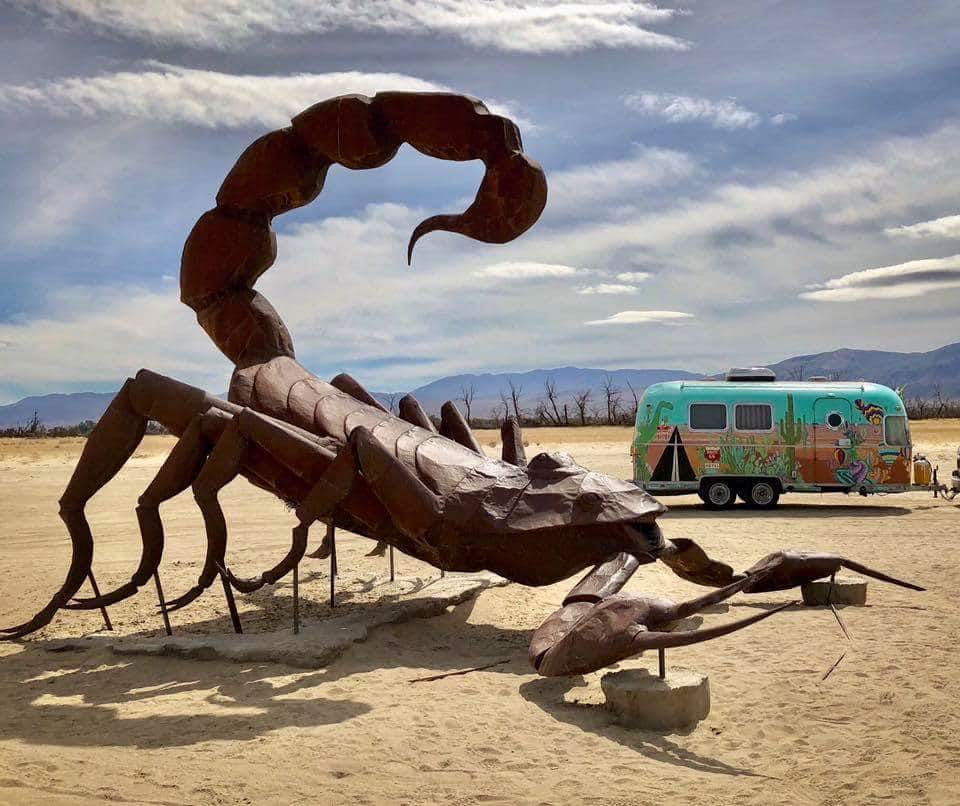
Image: Cate Battles
For some scenic views, take the drive up to Culp Valley and see the desert from above. While visiting, hike to Palm Canyon or the seasonal Maidenhair Falls, explore the ancient pictographs at Ghost Mountain, and adventure through the Arroyo Tapiado mud caves, one of the most extensive mud cave systems in the world. There are several options for camping; developed campgrounds include Palm Canyon and Tamarisk Grove or spend the night at a free primitive campground.
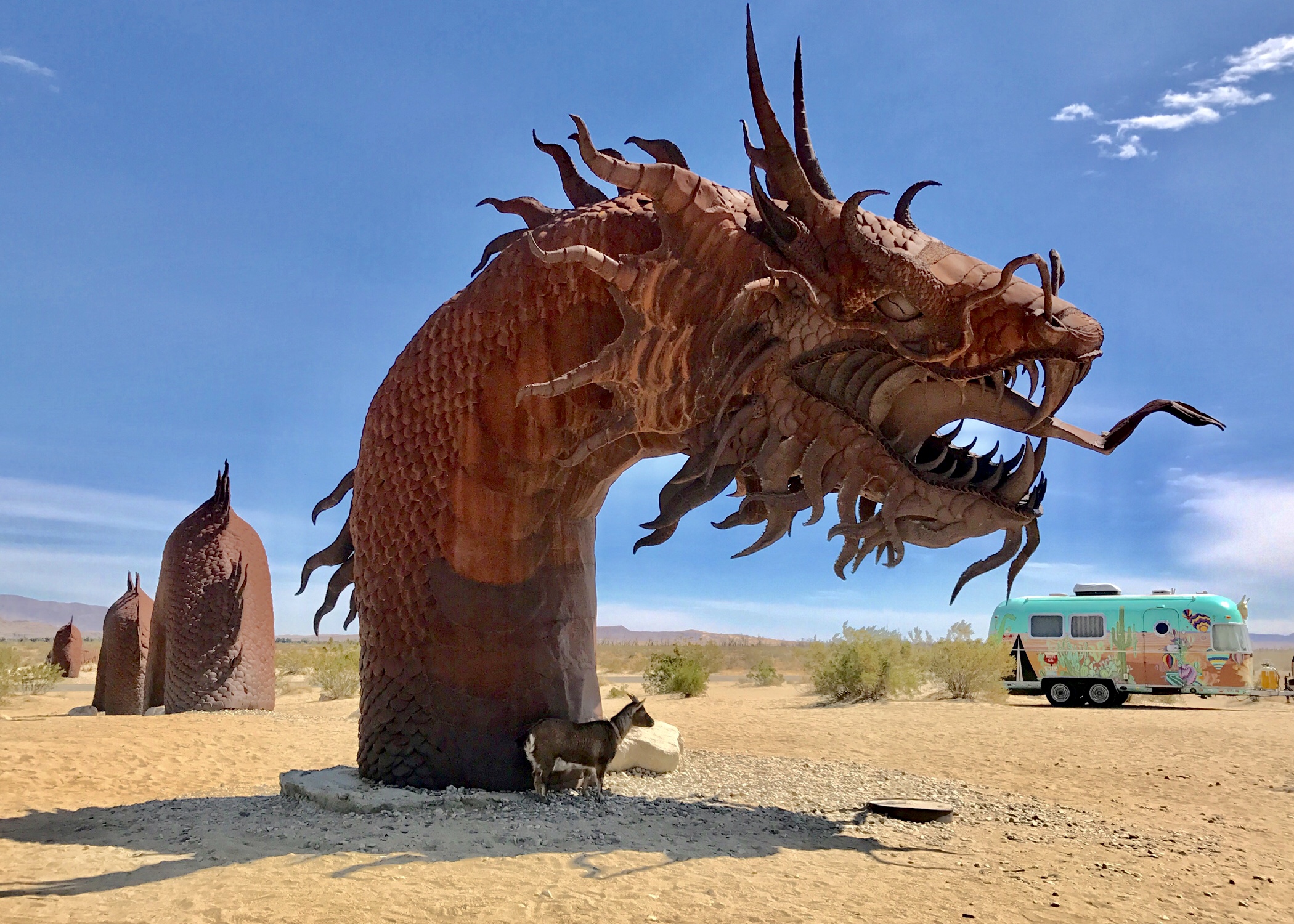
Image: Cate Battles
Salvation Mountain and Slab City
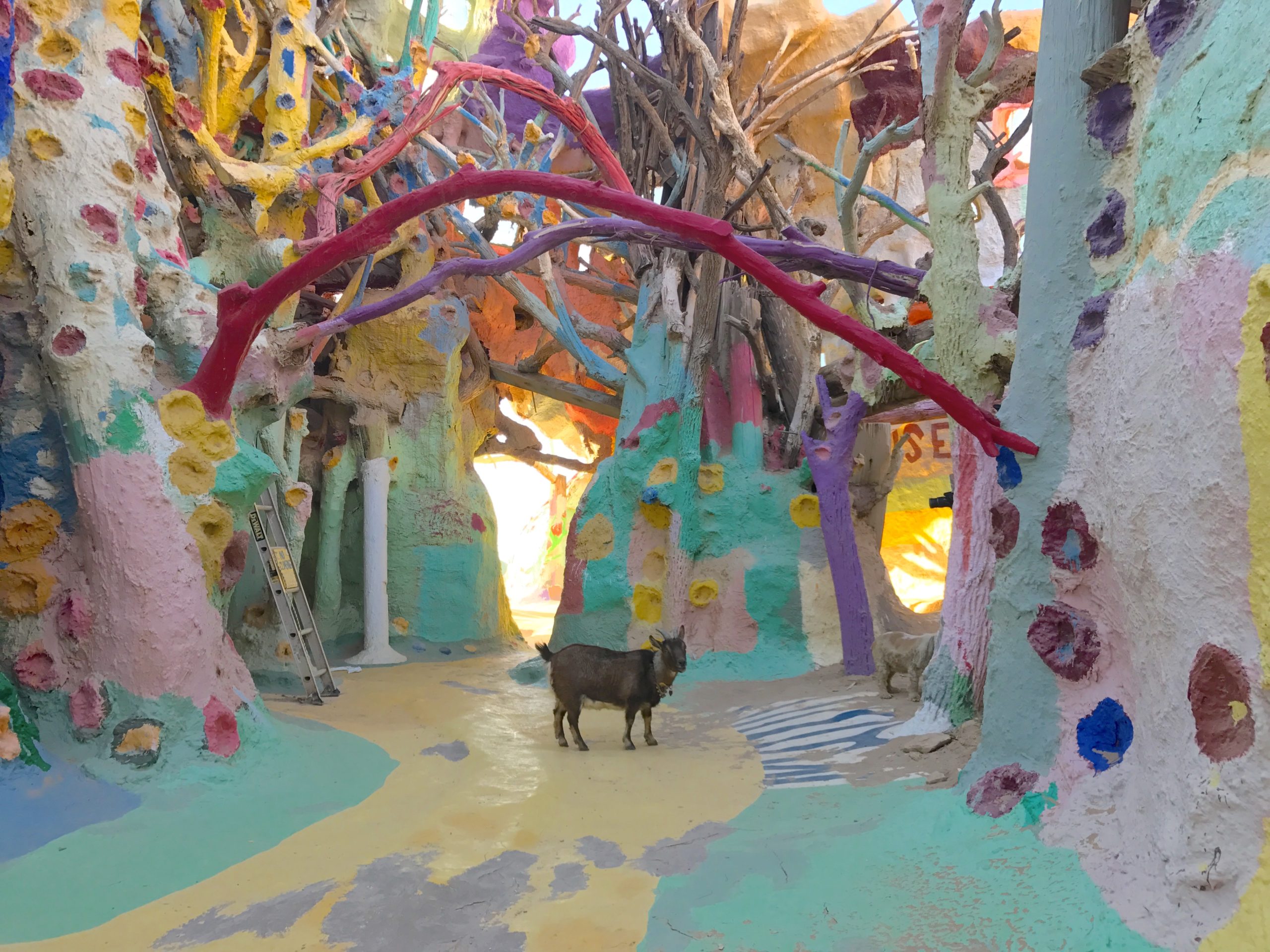
Image: Cate Battles
Perhaps one of the quirkiest stops along the way is Salvation Mountain. Located east of the Salton Sea near the town of Niland, you’ll realize you’re not in Kansas anymore when you arrive at this five-story-high technicolor mountain in the middle of no where. The creator, Leonard Knight, began this biblical dedication in the 1980’s using adobe, straw, and paint to create the structures. The colorful monument gives a message of universal love and hope, starkly contrasting the desolate landscape of the Sonoran badlands. Though Leonard passed away in 2014, volunteers continue to preserve Leonard’s legacy and maintain the grounds. It is open to the public and leashed pets are allowed.
Continuing down the road from Salvation Mountain, you’ll pass through Slab City, an abandoned Navy base, coined “The Last Free Place in America”. Considered a snowbird destination, this squatter’s paradise is home to artists, migrants, and survivalists that live off-grid. Without official electricity, trash pick-up, or running water, those who are camped out are devoid of law enforcement, taxes, and day-to-day interaction with the local municipality. Driving through Slab City definitely gives you a perspective on a different kind of lifestyle and can best be described as a Mad Max apocalypse meets an art museum.
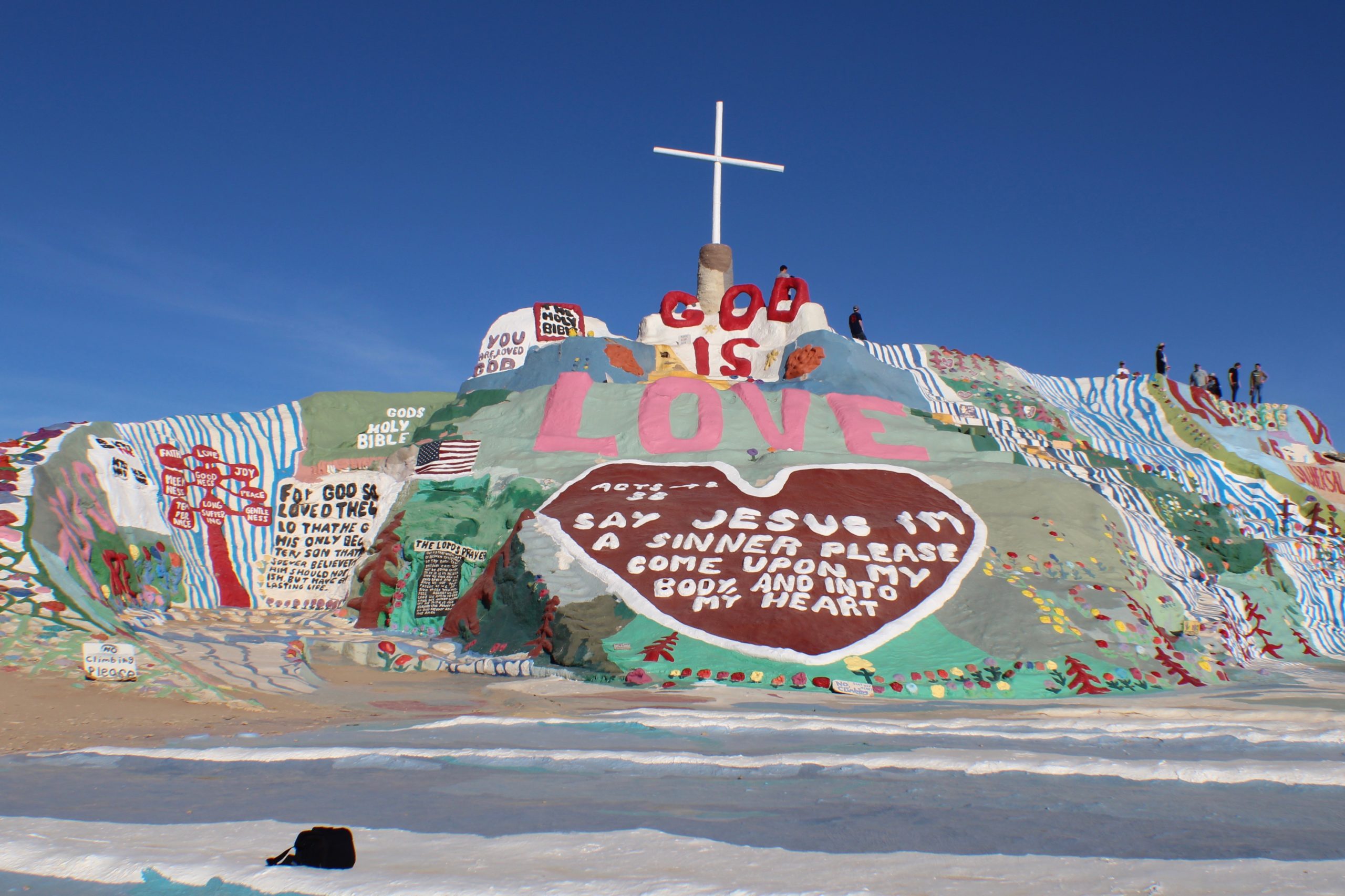
The colorful monument gives a message of universal love and hope. Image: Cate Battles
On the edge of Slab City, is the art community of East Jesus. The experimental and sustainable outdoor art installation began in 2006 by the late Charles Stephen Russell and encompasses dozens of sculptures repurposed from found materials. The exhibit is free but donations or building materials are appreciated as Mopar, the Gandalf-like hippie of East Jesus, welcomes you.
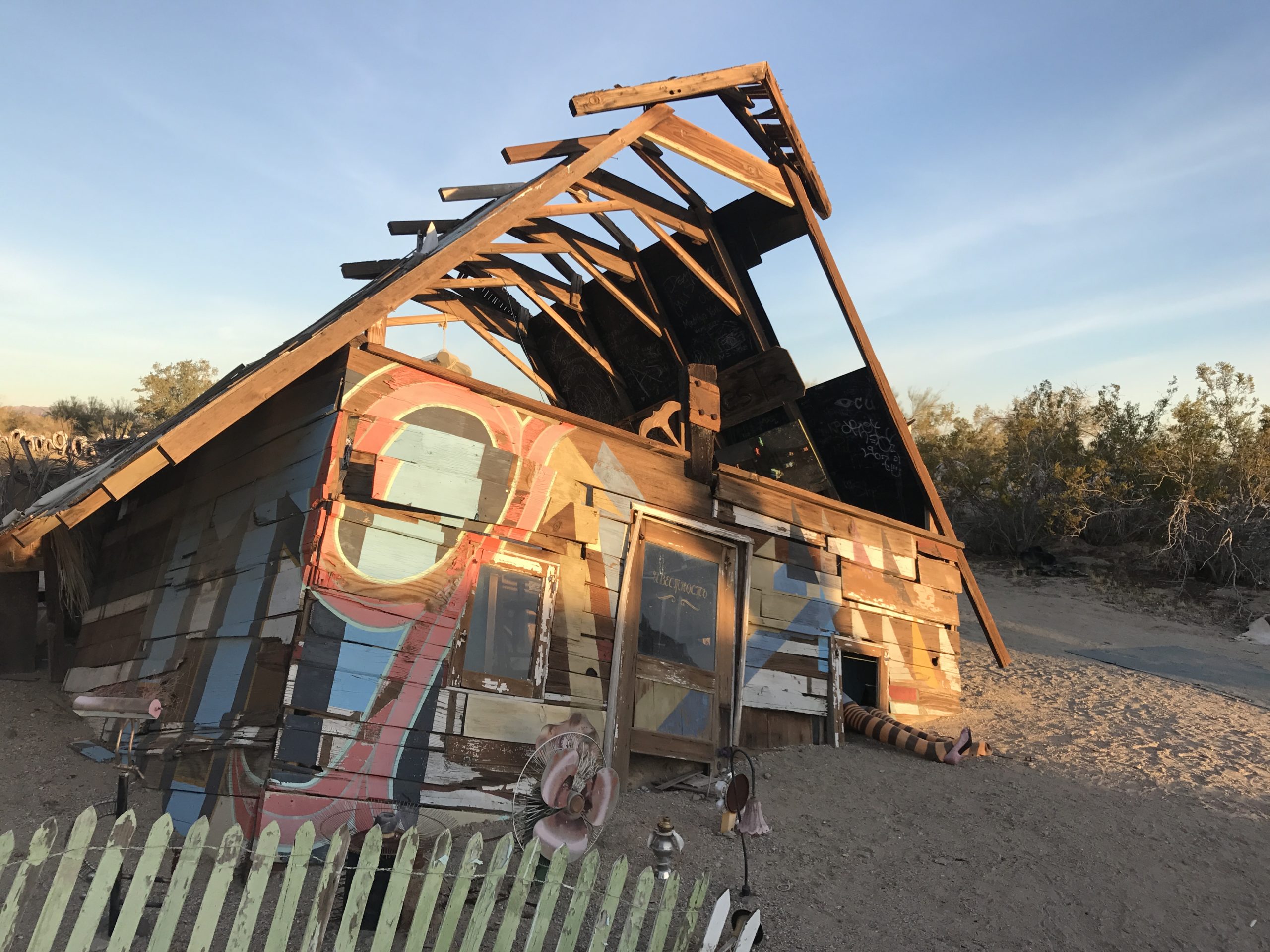
Part hippy art sculpture, Christian tribute & psychedelic Land of Oz rolled into one. Image: Cate Battles
Death Valley
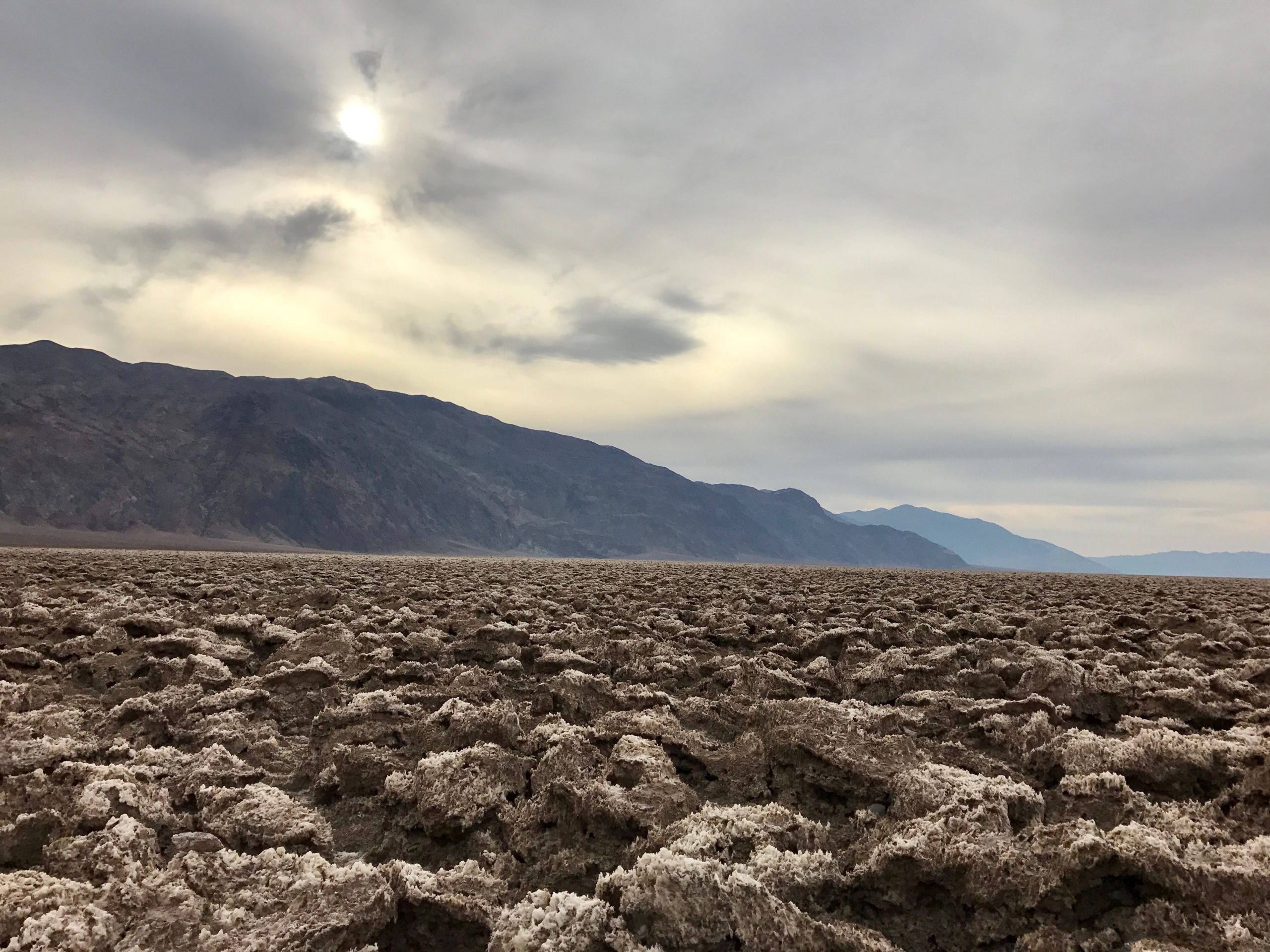
Devil’s Golf Course is a colorful landscape worn by wind and rain into beautiful jagged spires. Image: Cate Battles
Don’t let the name deter you; Death Valley has some of the neatest geological features in our National Park system. It’s a land of extremes as it holds the world’s hottest temperature record and is the lowest point in North America. However, if you visit during the winter and early spring, you can witness snow blanketing the mountaintops while wildflowers cover the valley floor. Located in the northernmost part of the Mojave Desert and situated between five mountain ranges, it’s a geological transition zone where you can enjoy salt flats, mountains, slot canyons, valleys, and sand dunes.
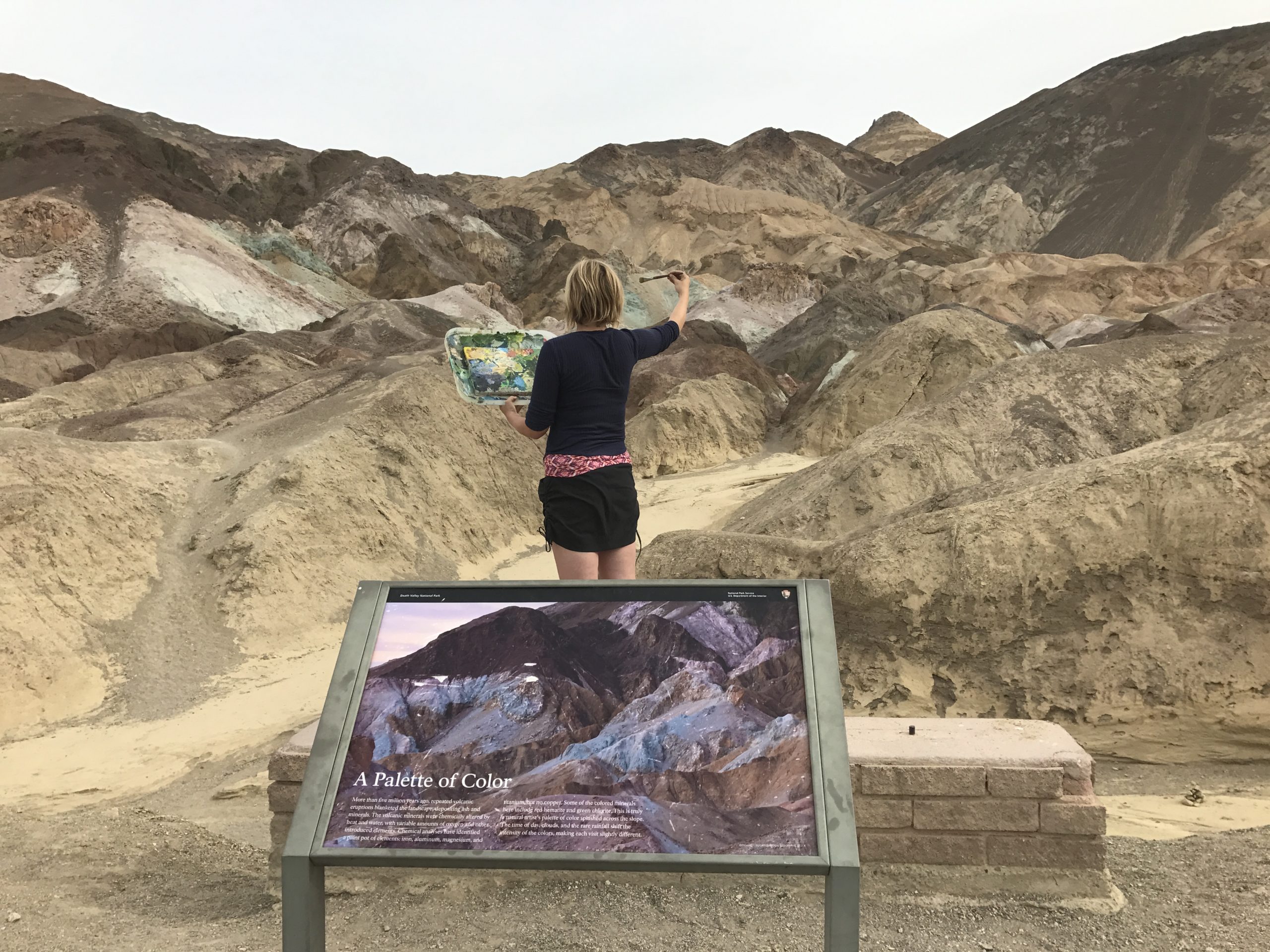
Artist’s Palette is an area on the face of the Black Mountains noted for a variety of rock colors. Image: Cate Battles
Not only is the geology rich, but also so is Death Valley’s history. Back in the 1800’s, the area was a popular gold mining destination, and still to this day, the ruins of Rhyolite are fascinating to visit. Despite violent flash floods and the harsh desert terrain, the train depot, jail, and bank remain standing.
To see some of the world’s lowest points on land, visit Badwater Basin and nearby Devils Golf Course. To get a splash of color, take Artist Drive to the Artist Palette, a mineral rich mountainside where the oxidation of the ground’s metals has painted the hills green, purple, pink, and gold. Watch the sunrise at the panoramic Zabriskie Point and explore slot canyons at Mosaic or Sidewinder Canyon. There are several paid campgrounds to choose from around Furnace Creek or free campsites at Wildrose Campground or the Pads, just outside of the park entrance.
Route 66
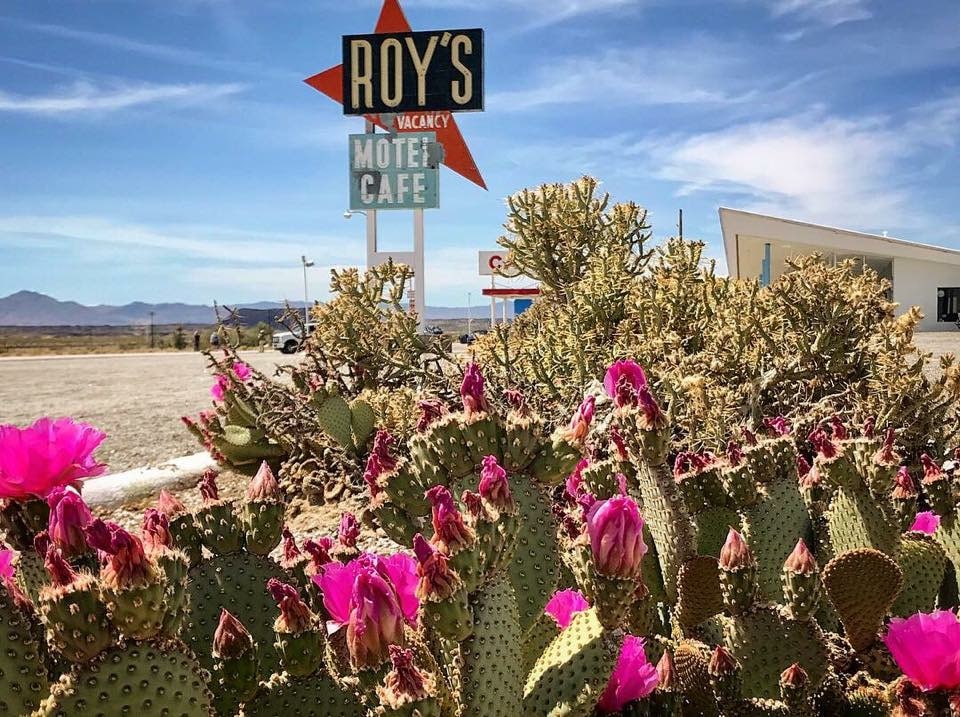
One of the most famous stops along Route 66 is the town of Amboy. Image: Cate Battles
Some of the most iconic landmarks of this bygone byway can be found in the California desert. America’s Mother Road stretches 315 miles across the state and ends at Santa Monica’s pier. One of the most famous stops along Route 66 is the town of Amboy, home of Roy’s Motel and Café, whose neon sign was recently renovated after nearly 30 years of being dark. Down the road from Roy’s is the Amboy Crater, an extinct cinder cone volcano where you can hike through the lava fields and up and into the crater.
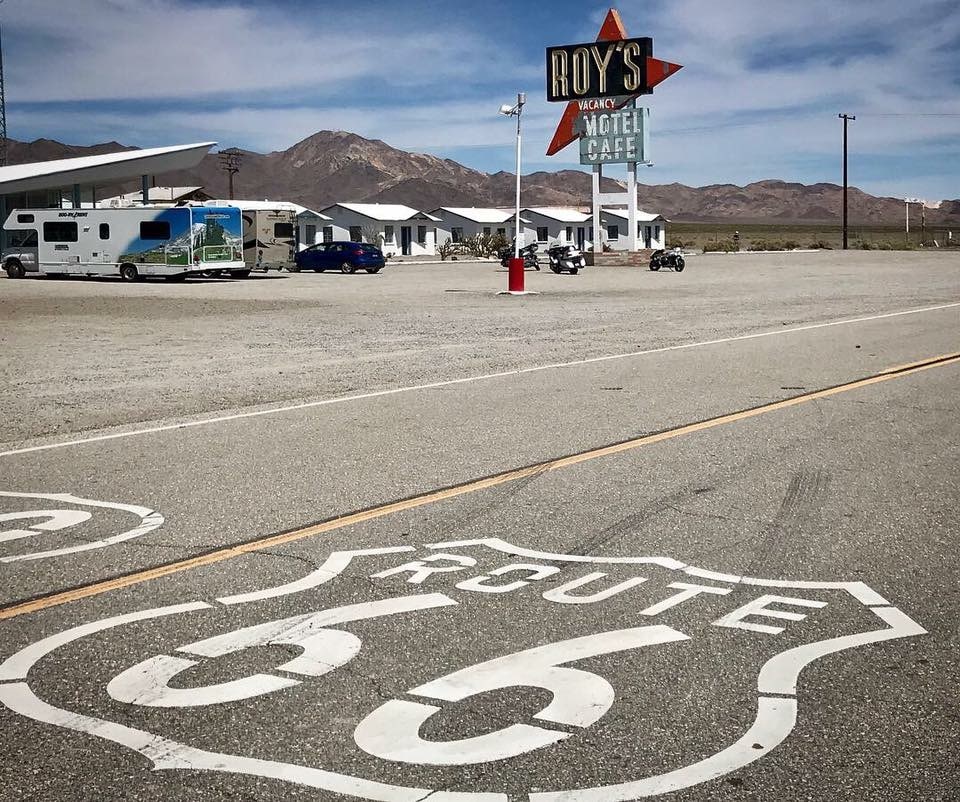
Image: Cate Battles
After Amboy, you can get your kicks at several kitschy stops between Barstow and Victorville. Elmer’s Bottle Tree Ranch is a “forest” of 200 glass-adorned spires created by Elmer Long. The sculpture garden is free to the public and is a fun place to explore and take pictures. Enjoy a blast from the past by visiting Victorville’s interactive Route 66 Museum, where you can see the evolution of the road and it’s impact on California’s culture.
Joshua Tree
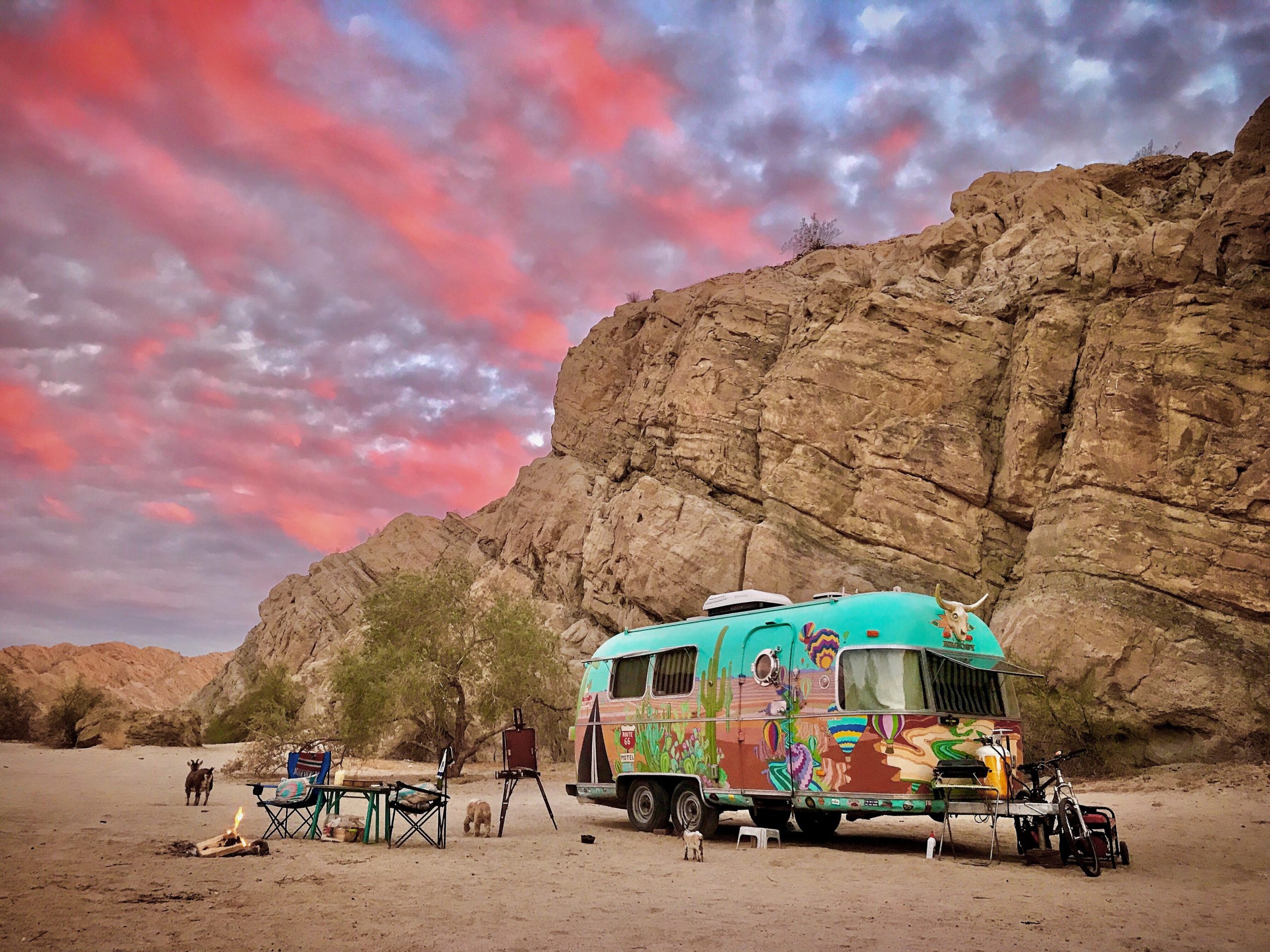
Desert sunsets are particularly red due to the dryness of the air. Image: Cate Battles
One of the more popular destinations in the California park system is Joshua Tree National Park, largely due to its close proximity to Los Angeles. However, you can beat the crowds and score an awesome sought after campsite by heading there during the winter months.
The park, which is known for its plant diversity, boasts over 750 species of flowers, trees, cacti, and shrubs. Like Death Valley and Anza Borrego, it’s a prime location to witness the occasional super bloom that happens late February and throughout the early spring. While visiting Joshua Tree, you’ll notice the flora change as you head from North to South because the park has two distinct deserts. The Mojave, which makes up the northwestern portion is considered high desert and is generally, cooler, wetter, and more vegetated. It’s the home of the park’s Seussian namesake, which is actually not a tree, but a species of Yucca. The Sonoran desert claims the southeastern portion of the park, and though it is more barren, it actually supports a greater variety of plants, including ocotillos, cholla, smoke trees, and palm oases. Joshua Tree is also a wonderful place for viewing wildlife, as 430 species of mammals, reptiles, birds, amphibians, and invertebrates call the park their home.
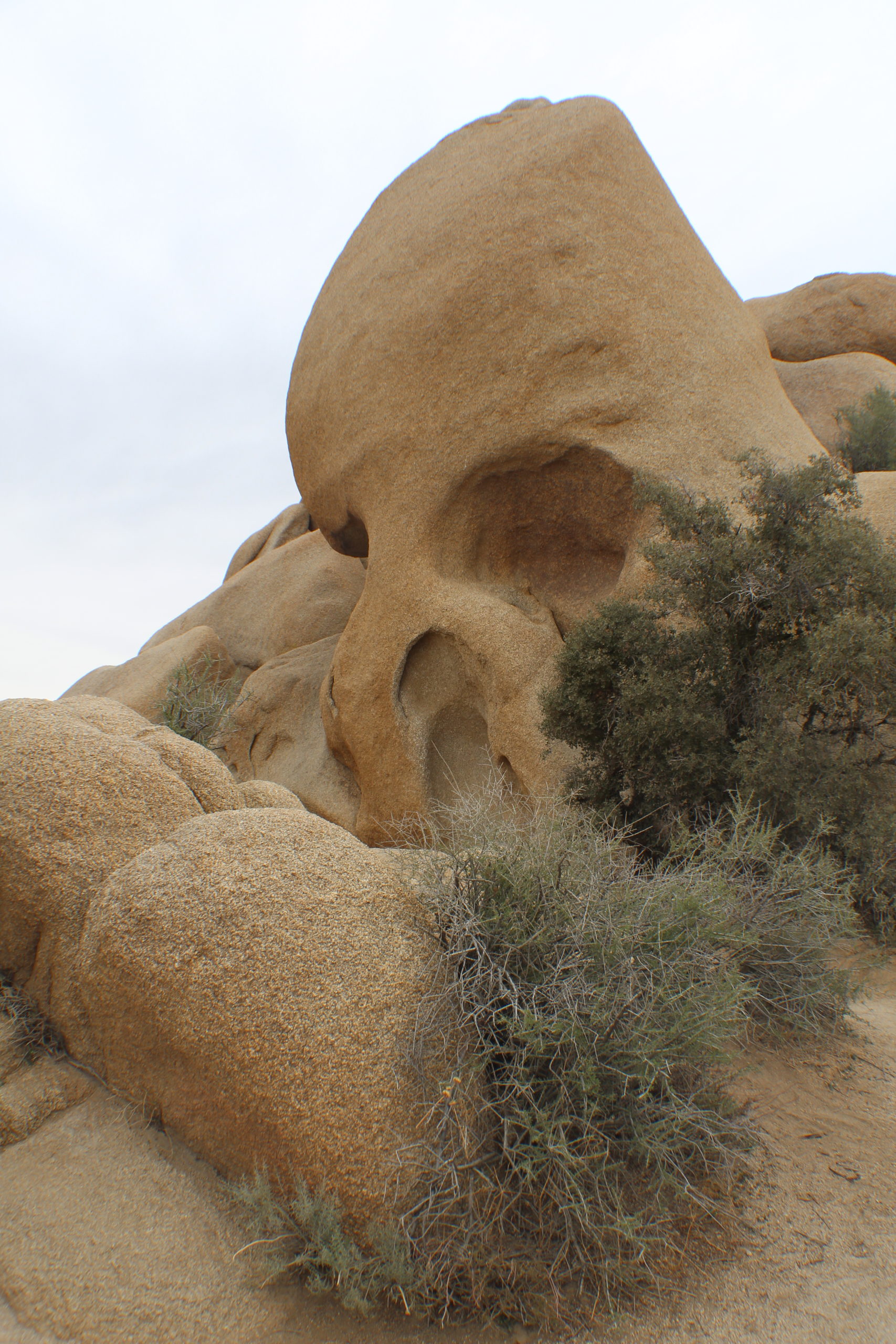
Image: Cate Battles
The iconic granite rock pilings of the park have made it a mecca for rock climbing and bouldering, but there are also dozens of trails open to hiking, horseback riding, and biking. While visiting, take a drive up to Keys View, the highest point in the park to get a birds eye view of the valley. Some other great hikes are to Barkers Dam, Lost Palm Oasis, Ryan Mountain, Mastodon Loop, and exploring Skull Rock.
There are eight designated campgrounds within the park boundary along with free dispersed camping outside of the Cottonwood entrance or along Box Canyon road. While grabbing supplies in town, take advantage of the amazing art in the community. A few neat places include the World Famous Crochet Museum, Nosh Purifoy Outdoor art Museum, and several art studios and galleries.
Trona Pinnacles
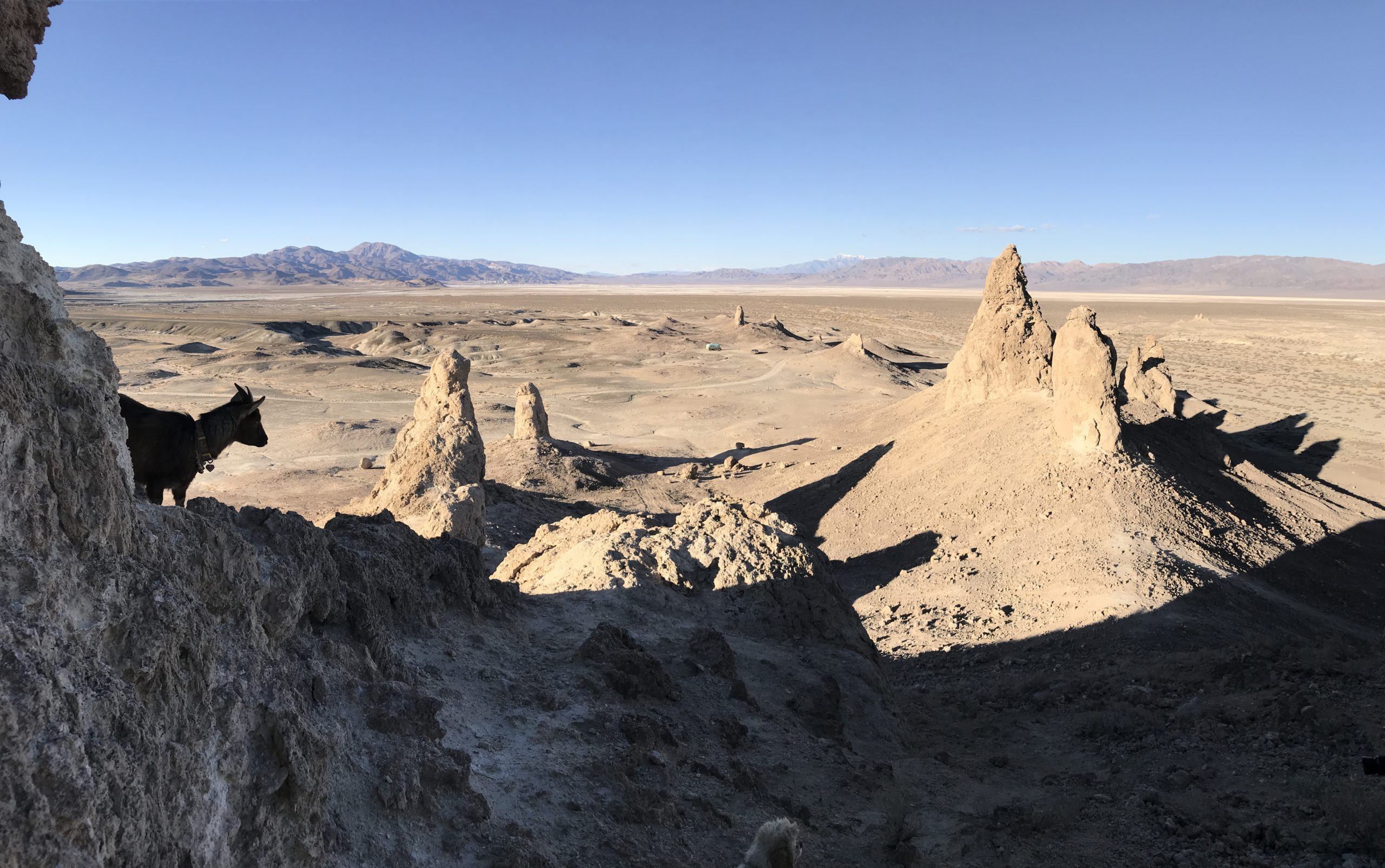
Image: Cate Battles
If you need to escape California for a bit, teleport to another planet and camp out at Trona Pinnacles. This otherworldly landscape consists of more than 500 tufa spires and can be found close to the town of Ridgecrest and down the road from China Lake, a secretive Naval weapons research station.
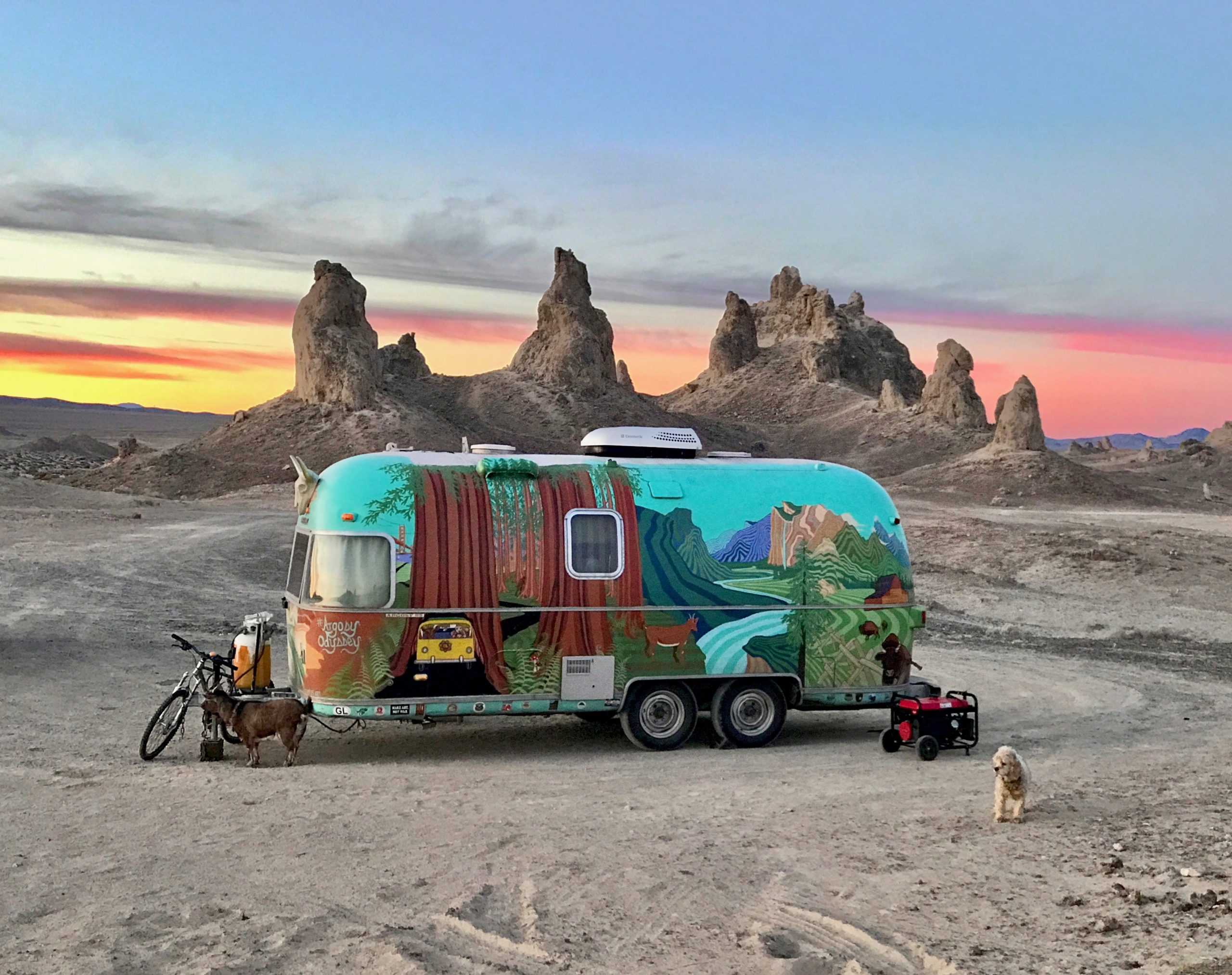
Image: Cate Battles
The tufa towers at Trona Pinnacles are remnants from Searles Lake and formed under water from 10,000 to 100,000 years ago, similar to the tufa formations at Mono Lake. In 2016, the Bureau of Land Management designated Trona Pinnacles part of California’s Desert National Conservation Land and the area is now permanently protected from development.
Though the road in is full of washboards, any vehicle can make the trek during dry weather. Camping in designated areas is free and you can stay up to 14 days, just know that the only amenity is a single vault toilet. While there, meander around the tufa formations on pet friendly foot trails, and enjoy stargazing at night. Speaking of galaxies far, far away, Trona Pinnacles has been a choice location for Hollywood Sci-Fi’s and has served as the backdrop of films including Star Trek/Final Frontier, Planet of the Apes, Battlestar Galactica, Lost in Space, and Disney’s Dinosaur.
Desert Safety
While traveling through California’s desert, make sure to be well prepared. Cell reception and car navigation systems can be spotty so always carry a map. Watch the weather, even a little bit of rain can create dangerous flooding and leave you stranded in the mud or sand. It’s also wise to check for road closures, especially in higher elevations that can be snow covered during winter month. And lastly, carry plenty of water on hikes and protection from the sun and other elements.
Author, photographer and artist Cate Battles travels the country full time with her husband, Chad, in their renovated, mural-painted 1976 Airstream Argosy. The couple’s travel blog, Argosy Odyssey, chronicles their adventures as they tour North America with their pet goat and dog. You can read more of Cate’s dispatches for Trailer Life here and follow the Battles on Instagram and Facebook.

